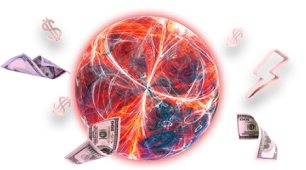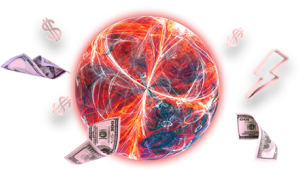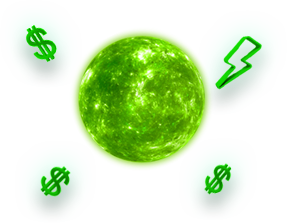Watch daily commentary and make informed trading decisions
Watch daily commentary and make informed trading decisions
New to forex trading or unsure about the meaning of a word?
Take a look at our comprehensive A-Z list of the key terms associated with trading and the markets and become an expert.
Refers to the market price at which traders can buy currencies. Ask prices are also known as the Offer Price.
Is an economic resource which can be owned or controlled to return a profit, or a future benefit. In financial trading, the term asset relates to what is being exchanged on markets, such as stocks, bonds, currencies or commodities.
A trader who believes that the price of an asset will fall.
Is the amount of money that a buyer is willing to pay for financial asset security.
A trader who believes that a market, instrument, or sector is going on an upward trajectory.
Is the nickname used for the currency pair GBP/USD.
Is an option contract giving the owner the right, but not the obligation, to buy a specified amount of an underlying security at a specified price within a specified time. When a trader believes that an asset price will rise, s/he purchases this option. Also known as a High Option.
When an investor borrows at low interest rates so they can buy assets that are likely to produce higher interest rates.
Is a financial market that deals with raw materials. It Is also known as a ‘primary economic sector’.
Opening and closing a position on the same day. As a rule, day traders trade on intraday market movements.
Is the FX rate for a quote in fixed units of foreign currency against variable amounts of the local currency. Hence, the foreign currency is always the base currency.
Is used to enter a trade at a specified price level. If the currency pair never reaches that price level then the entry order is not executed.
Rate where a currency price can change freely, as it is influenced by an open market, rather than being fixed to the value of another currency.
Is an agreement to buy or sell a predetermined amount of a commodity at a specific price on a specific date in the future and its fulfilment is obligatory.
Are sharp breaks in price where the market moves directly from one correctly quoted price to another, which is significantly different. They are represented graphically by a non-linear jump or drop from point on the chart to another point.
Is the premier Germany stock index, comprising a weighted average of the 30 largest companies on the Frankfurt Stock Exchange. Otherwise known as DAX 30.
Is a price pattern in candlestick charting that occurs when a security trades significantly lower than in its opening, but rallies within the period of the candlestick to close near, yet lower than, the opening price.
Is an investment to reduce the risk of adverse price movements in an asset. Typically, a hedge consists of taking an offsetting position in a related security, like an options or a futures contract.
Refers to the buyer of a currency in forex trading.
Is a quantitative measure of the rate at which overall prices of goods and services rise over a certain amount of time. Often expressed as a percentage, this means that, as the general prices climb, the purchasing power for each unit of currency declines.
Are the rate at which a borrower pays for holding a debt to a lender, typically expressed as an annual percentage of the loan outstanding.
Is a slang term for the New Zealand Dollar. Currency code (NZD).
Is the process that a business involved with financial transaction undertakes to identify and verify the identity of customers. It is an essential part of banking regulation.
In international business it most commonly refers to the alternation of normal payment or receipts in a foreign exchange transaction based on an expected change in exchange rates.
In simple terms it is the ratio of the amount of capital used in a transaction to the required margin. Leverage gives you the ability when trading to control much larger monetary amounts in a trade with only a relatively small deposit (your margin).
Is a type of order to purchase or sell a security at a specified price or better.
In the financial markets, a lot represents the standardised number of units of a financial instrument as set out by an exchange or similar regulatory body. The number of units is determined by the lot size.
Is the minimum amount of funds, expressed as a percentage, that you will need if you want to open a position and keep your positions open.
Occurs when the balance of an investor’s account falls below the broker’s required amount. A margin call is the broker’s request that an investor deposits additional funds so that the account is brought up to the minimum value.
Is a term used to describe the rate of change in the price of an asset – a pattern used in technical analysis. By recording the slope of a trendline the momentum is calculated; this tracks the price levels of any given asset over time.
Is the total earnings of a company. This term reflects revenues such as interest, taxes, depreciation, and other expenses for the cost of doing business. The net income shows the overall ‘health’ of a company.
Is the value of the position once the initial cost of setting up the position has been subtracted.
Released on the first Friday of each month, this data is an estimate number of payroll jobs at all nonfarm businesses and government agencies. Traders use this information to form educated decisions regarding their investment portfolio, based on the implications of NFP data and future interest rate levels.
Is a commodity used for generating power and energy in modern society. Oil market prices are determined by global supply and demand. However, as sources of supply are more scarce than common as well as being a non-renewable resource, abnormal circumstances apply for the supply side. Oil is traded mostly via the purchasing and selling of oil futures.
Is the type of order that will be executed when a specific market price is reached.
Is a currently active trade that has yet to be closed.
Is when a market moves quickly in a very short time period, usually moving in an accelerating fashion that resembles one half of a parabola. The term tends to be used more frequently in an upward movement.
Represents a tiny measure of the change in a currency pair in the forex market and is short for point in percentage. It can be measured in terms of the quote or in terms of the underlying currency. A pip is a standardised unit and is the smallest amount by which a currency quote can change. This standardised size helps to protect investors from huge losses.
Is the level of accessibility regarding information about bid prices, ask prices and trading quantities for a trading instrument.
Is how a trending market retraces a portion of the profits before heading or remaining in the same direction. Tends to be utilised in a pause of an uptrend.
Is when a central bank injects money into an economy with the aim of stimulating growth. The central bank in this case tends to buy government securities or even corporate securities to increase the liquidity of the market.
Are a type of future with expiry dates every three months (once per quarter).
Tends to be the latest price at which a share or commodity was traded, meaning the most recent price to which a buyer and seller agreed to make a transaction for the instrument in question. Also known as Quoted Price.
Is the second currency in a currency pair and is used to determine the value of the base currency (the first currency mentioned in a currency pair).
Is when a price recovers after a sustained period of decline.
Is the relative price at which one currency can be exchanged for another.
Refers to exposure to uncertain, unexpected, and unwanted changes.
Is the difference between the price that was requested, and the price obtained, typically due to changing market conditions.
Refers to choppy trading conditions that lack any meaningful trend and/or follow-through.
Is the difference in pips between the ask price and the bid price. The spread represents the brokerage service costs and replaces transaction fees.
Is a temporary halt in the trading of a product.
Stands for ‘Take Profit’ and is a type of limit order which allows the trader to specify the profit to a certain amount when the price reaches a certain level and the position closes.
Is an illiquid and light-volume market that produces unpredictable trading conditions.
Is a measure of the minimum upward or downward movement in the price of a security.
Is a new higher price quote than the previous quote of a security’s price rise in relation to the last tick. Also referred to as a Plus Tick.
Is a regulation that has been established by the US Securities and Exchange Commission (SEC). It requires that a security is sold short at a higher price than the previous trade. Also known as Plus Tick Rule.
Is a move higher in the price action, created by a series of consecutive higher peaks and consecutive higher troughs. An uptrend signals a bullish sentiment, i.e. that prices tend to rise. Traders look to buy the pullbacks (temporary drop in price) near the trend line, among other techniques.
Is the Chicago Board Options Exchange (CBOE) Volatility Index, also known as the ‘fear index.’ It is a measure used to track expected volatility on the S&P 500 index over the next 30 days and is the most well-known volatility index on the market.
Is a statistical measure which represents how large an asset’s prices move around the average price. It usually refers to the uncertainty regarding the size of changes or fluctuations in a security’s value.
Is the total number of shares or contracts traded between a buyer and a seller for a specified security over a period of time. Volume of trade is measured on stocks, bonds, options contracts, futures contracts, and all types of commodities.
Refers to the chart pattern marked by converging trend lines on a price chart. Wedge shaped trend lines are considered useful indicators of a potential reversal in price action by technical analysts.
Is a slang term for a condition of a highly volatile market where a sharp price movement is quickly followed by a sharp reversal.
Is a general term for either a stop or limit order. It is used to advise your broker to execute a trade when an asset reaches a specific price.
Is a symbol that appears as a footnote or suffix to a ticker system on a trading platform or published report. It stands for Ex-dividend, which means ‘without the dividend.’ When a stock is trading ex-dividend, the current stockholder has received a recent dividend payment and whoever purchases the stock will not receive the dividend. The stock's price is likely to be lower as a result.
Is a currency that circulates or trades in markets outside of its domestic borders. The name derives from the Greek prefix ‘xéno,’ meaning foreign or strange. An example would be the Japanese yen (JPY) being deposited into a European bank account or the Indian rupee (INR) being traded in the United States.
Is one of the world’s oldest electronic trading systems, launched in Frankfurt, Germany in 1997. It offers increased flexibility for seeing order depth within the markets and offers trading in stocks, funds, bonds, and commodities contracts. It is also currently being used by stock exchanges in Ireland, Vienna, and Shanghai.
Is the annual rate of return on an investment expressed as a percentage. It is calculated by dividing the coupon rate by the current price.
Is a graph plotting the interest rate of a given security (most commonly government debt) for a range of different maturities.
All trading involves risk. It is possible to lose all your capital.


IronFX Affiliates
iFX EXPO Dubai
22-24 February 2022
Dubai World Trade Center
Meet us there!
Iron Worlds Championship
Grand Finale

Prize Pool!*
*T&Cs apply


Iron World
November 16 – December 16
Minimum Deposit $5,000
All trading involves risk.
It is possible to lose all your capital.
The Iron Worlds Championship

Prize Pool!*


Titania World
October 15 – November 15
Minimum Deposit $3,000
*T&C apply. All trading involves risk.
It is possible to lose all your capital.
Iron Worlds Championship

Prize Pool!*


Tantalum World
14 September– 14 October
Minimum Deposit $500
*T&C apply. All trading involves risk.
It is possible to lose all your capital.
Thank you for visiting IronFX
This website is not directed at UK residents and falls outside the European and MiFID II regulatory framework, as well as the rules, guidance and protections set out in the UK Financial Conduct Authority Handbook.
Please let us know how would you like to proceed:
(Recommended for UK residents)
Thank you for visiting IronFX
This website is not directed at EU residents and falls outside the European and MiFID II regulatory framework.
Please click below if you wish to continue to IRONFX anyway.
Iron Worlds Championship

Prize Pool!*
Phosphora World
14 August - 13 September
Minimum Deposit $500
*T&C apply. All trading involves risk.
It is possible to lose all your capital.